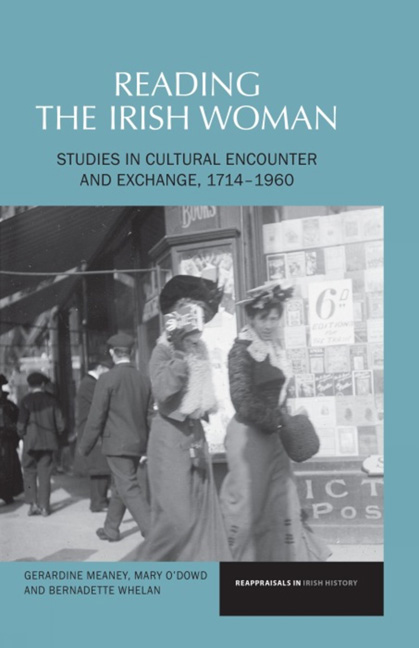Conclusion
Summary
This study has explored the complexity of cultural encounters in which Irish womanhood has evolved. In the ‘constantly shifting kaleidoscope of give and take’ between cultures, women's identities were negotiated and re-negotiated in each of the periods and contexts analysed in this study. We have traced the circulation of ideas, fantasies and aspirations which have shaped women's lives in actuality and in imagination. There are traces in the cultural material of a desire to explore many different ways of being a woman. Attention to women's cultural consumption and production shows that one individual may in one day identify with representations of heroines of romantic fiction, patriots, philanthropists, literary ladies, film stars, career women, popular singers, advertising models and foreign missionaries. The processes of cultural consumption, production and exchange provide evidence of women's agency, aspirations and activities within and far beyond the domestic sphere.
In this tangled web of motive and purpose, it is impossible neatly to categorise cause and effect. It is possible to trace the circulation and readership of texts promoting women's education, for example, but this does not provide conclusive proof of their impact on educational opportunity. Advertisements sold modern appliances by promoting fantasies of new forms of domestic life and personal freedom. Such appliances did change the lives of women who could afford them, but effectively trapped them in a new form of domesticity. Popular films, plays and novels explored real issues for women, particularly in relation to work and opportunities for marriage. The fantasy solutions they proposed to these problems may often have been implausible, but they offered solace to some and space for dissent and change to others. Fantasy is a powerful motivational force and the idea of America, for example, had a profound impact on the actual lives of many Irish women.
These case studies have explored that ‘evolving cultural hybrid’, the Irish woman. Womanhood in Ireland is constructed at the intersection of Irish local concerns and international developments. A complex picture of women's reading, writing and aspirations emerges which challenges the assumption that Catholic cultural hegemony was the prevailing force in determining women's roles.
- Type
- Chapter
- Information
- Reading the Irish WomanStudies in Cultural Encounters and Exchange, 1714–1960, pp. 218 - 220Publisher: Liverpool University PressPrint publication year: 2013



